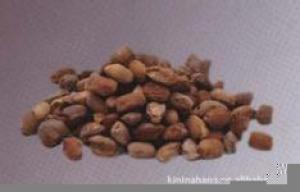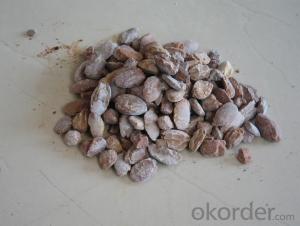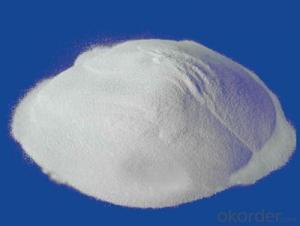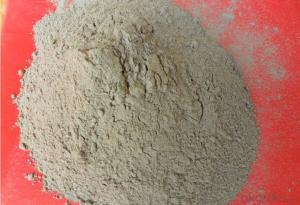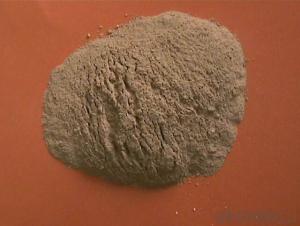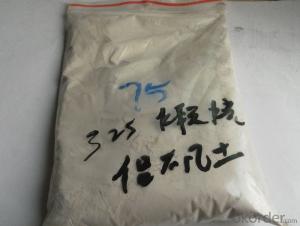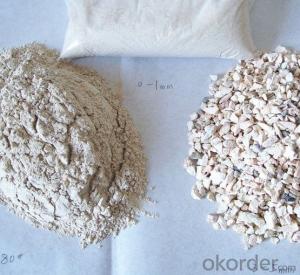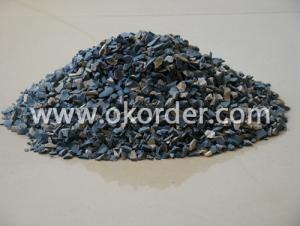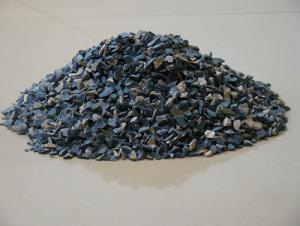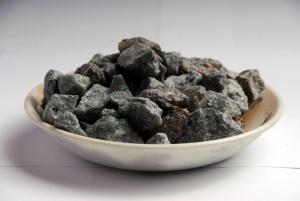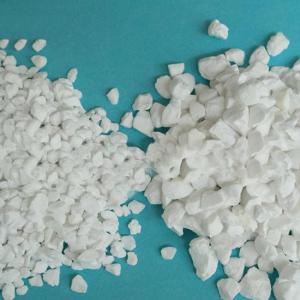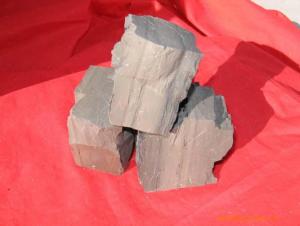Raw Materials for Refractory - Dead Burnt Magnesite MgO 89%
- Loading Port:
- Dalian
- Payment Terms:
- TT OR LC
- Min Order Qty:
- -
- Supply Capability:
- 2000 m.t./month
OKorder Service Pledge
OKorder Financial Service
You Might Also Like
DBM-is produced using selected natural magnesite that is purified and is calcined in a shaft kiln.The final product is used for electric furnacefloors and furnace liner tamping.
Many typical specification as following :
Grade | MgO (min.) | SiO2 (max.) | CaO (max.) | Fe2O3 (max.) | Al2O3 (max.) | L.O.I. (typical) |
mesh |
DBM90 | 90.00% | 1.00% | 1.50% | 0.70% | 0.10% | 1.70% |
0-400 |
DBM95 | 95.00% | 1.00% | 1.50% | 0.80% | 0.10% | 2.60% | |
DBM96 | 96.00% | 1.50% | 2.50% | 0.80% | 0.30% | 2.90% | |
DBM97 | 97.00% | 3.00% | 2.50% | 0.80% | 0.30% | 3.40% |
Packaging & Shipping of DBM :
Packaging: 1.25MT jumbo bags or 1MT jumbo bags
Delivery details: according to customers’ requirements
Application of DBM:
1.Mainly used in processing raw materials of different magnesia refractory,
2.The production of steel lining the bottom and ramming mixes;
3.The raw materials of magnesia brick and magnesia-chrome brick;
4.Used electric steel making furnace, heating furnace, non-ferrous metals blowing converter furnace the bottom and the lining of the refractory materials.
Advantages:
1) We have subsidiary plants doing metallurgical materials;
2) For some product, we do trading, while we can control the quality and cost due to our strong capacity and cash flow in China;
3) Our logistics and freight charge is lower than others since we have big quantity cargo to be exported in some main ports China;
4) We have strict and mature quality and logistics control on the cargo;
5)As a governmental company, we are reliable.
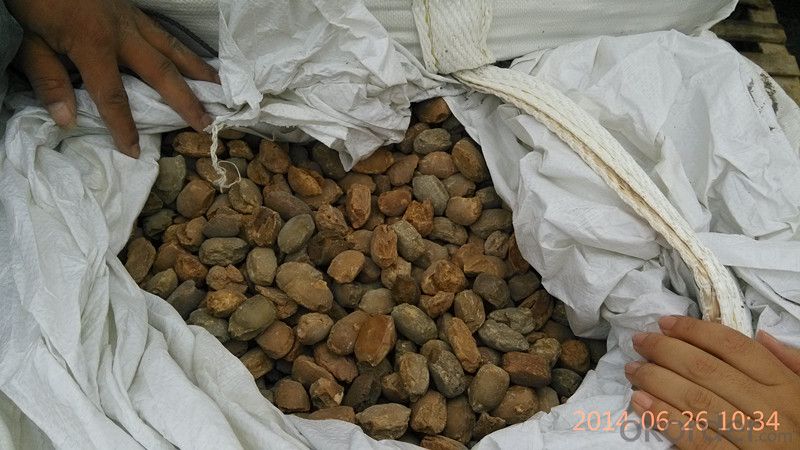
- Q: What are unshaped fire-resisitance materials?
- Refractory castable, refractory plastic material, usually classified according to construction and manufacture method, unfired bricks precast block, refractory pressed into material, refractory cast material, refractory coating, refractory ramming material there are many classification methods
- Q: Are fire materials poisonous after burning?
- Neutral refractory is mainly composed of alumina, chromium oxide or carbon. Corundum products containing more than 95% of alumina are a kind of high quality refractory materials with a wide range of uses. Chrome brick with chromium oxide as its main component has good corrosion resistance, but its thermal shock resistance is poor, and its deformation temperature is lower at high temperature. Carbon refractories with carbon bricks, graphite and silicon carbide products, low coefficient of thermal expansion, high thermal conductivity, good thermal shock resistance, high strength, resistance to acid and salt corrosion, especially weak acid has good resistance, without wetting of the metal and slag, light. It is widely used as lining material of high temperature, and also used as lining of autoclave in petroleum and chemical industry.
- Q: Who can introduce the difference between galvanized fireproof?coatings and steel structure fireproof materials?
- When the steel surface derusted, it generally needs to brush rich-zinc primer before spraying fireproof coating. Fireproof coating plan itself includes anticorrosion plan, and fireproof coating is just a layer of coating plans, which is an intermediate layer in general. Fireproof coating plan generally includes primer, fireproof coating and finishing paint. Some fireproof coatings can be directly painted on the bare steel elements without primer and finishing paint. Galvanized surface generally is not necessarily needed for brushing fireproof coating. Fireproof and galvanized surface have relatively poor bond strength, so it is advisable to brush transitional lacquer or micaceous iron on the galvanized surface.
- Q: What kind of fireproof material is used for steel structure?
- Brushing or spraying the coating on the surface of steel structure to prevent burning and insulate heat. It also prevents undermining the rolled steel from rapid temperature elevation and avoid collapse of building for lose of supporting capacities. Agglutination material are classified as fireproof coatings for steel structures which is solvent based and Water-based steel structure fire retardant coatings. Fireproof coatings for steel structures which is solvent based are subdivided into fireproof coatings for steel structures which is solvent based with low benzene content and fireproof coatings for steel structures which is solvent based with high benzene content (TVOC≤600g / L, benzene ≤5g / kg). It can be divided by thickness. ultra-thin (CB) fireproof coatings (coating thickness ≤3mm), thin (B) fireproof coatings (3mm & amp; lt; coating thickness ≤7mm) and thick (H) steel structure fire retardant coating (7 mm & amp; lt; coating thickness ≤45㎜).
- Q: Urgent question: could you tell me that the export of refractory materials to Vietnam is to be packed in wooden cases and smoked?
- Why is the apple screen so small?
- Q: What's the heat conductivity coefficient, specific heat capacity and density of the refractory material of magnesite-chrome brick and magnesia-alumina brick respectively?
- It is suggested that you find some samples of well-known manufacturers, such as Ogilvy and Mather Group, and that will be more correct.
- Q: What level is the rock wool board fireproofing material ?
- The fire rating classification is a provision for all insulation materials, rather than to separately divide rock wool. Determine the value of the material fire rating according to the relevant test items of 8624. As the rock wool is made from basalt fusion, so it is the level A non-combustible material.
- Q: Introduction to refractory material
- Refractory material refers to inorganic non-metallic materials with refractoriness of no less than 1580℃. Refractoriness refers to the centigrade temperature of refractory cone sample in the case of no load when resisting high temperature without softening. But the refractoriness alone cannot descript the refractory material, thus 1580℃ is not absolute. Now refractory material is defined as material used in high temperature allowed by its chemical properties. Refractory material is widely used in metallurgy, chemical industry, petroleum, machinery manufacturing, silicate and power industrial area, of which the application in metallurgy accounts for the largest part of 50% ~ 60% of total output.
- Q: Are there any differences between insulation and refractory materials ?
- I will explain to you in a simple way. Refractory materials can resist more than 1200 degrees, some of which are not insulation materials, such as firebricks, which can directly contact with heat source, has little insulation effect. Ceramic fiber, high silica, etc. are all refractory materials which can insulate. Insulation materials with poor performance usually is lower than 800 degrees, which have large thermal resistance, and low thermal conductivity, high porosity. Thus they reduce the thermal loss. To put it simply, insulation materials store most of the heat and only let a small part of heat lose through the air, thus the heat has been isolated. Glass fiber, rock wool, flexible material for thermal insulation, etc. I hope you can understand it.
- Q: How to distinguish the fire resistant level of construction materials?
- Division of fire resistant level of building material: 1, It can be divided into five levels according to the importance: a, special class: commerative, historic, international and national buildings. b, Class A: high-grade residential architecture and public building. c, class B: middle-grade residential architecture and public building. d, class C: orinary residential architecture and public building. 2, It can be divided into four grades according to fireproof?performance: Fire resistance level buildings is divided into four levels. Standard of fire resistant level is based on the combustion performance and fire endurance of main components of the house. 3, It can be divided into 4 levels according to durable life: a, A grade durable life, over 100 years, for important buildings and high-rise buildings. b, second level durable life, from 50 to 100 years, for ordinary buildings. c, third level durable life, from 25 to 50 years, for secondary buildings. D, fourth level durable life, less than15 years , for temporary buildings. I hope my answers will help you.
Send your message to us
Raw Materials for Refractory - Dead Burnt Magnesite MgO 89%
- Loading Port:
- Dalian
- Payment Terms:
- TT OR LC
- Min Order Qty:
- -
- Supply Capability:
- 2000 m.t./month
OKorder Service Pledge
OKorder Financial Service
Similar products
Hot products
Hot Searches
Related keywords
